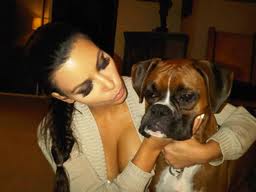
American Humane Association states:
Almost half of the pet owners surveyed admit they sometimes talk to their pet. And 80% of those people stated that on those occasions, the animal seemed to respond by means of sounds, facial expressions, or body language.
So reading this got me thinking. Do you talk to your boxers? My answer- “yes of course (regularly actually)” and I do believe they talk to me in “woo woo” boxer language. They speak when they are hungry and if I ask them to wait, they do. I talk to them about my day, I mean after all- they are man’s best friend for a reason. And quite frankly my boxers are both really good listeners. As a psychologist, I am keenly attuned to recognizing and observing body language. What I have learned is that my boxers behave (with their bodies) in a way that I know they are listening to me. So although they can’t talk, I know they are listening. The Veterinary Partner posted an interesting article called Talking To Your Dog that stated:
A dog’s first and most natural language is body language. People have this language, too, though body movements of dogs and body movements of humans can have different meanings. As you and your dog become more and more familiar with each other’s body language, your communication will get better and better.
When you are consistent with the body movements you use around your dog, the dog will learn to read your signals. It’s important that you be aware of the signals you are giving. Use a mirror, your reflection in a glass window, or even a video camera to check yourself and see what your dog sees. Then you can refine meaningful body language signals to communicate with your dog.
Words become a “second language” to dogs. They won’t speak words-or if they do learn some words, won’t speak many! But like a human child too young to speak, dogs can pick up a lot of words when people use them consistently. Unlike the human child, your dog is unlikely to develop a sophisticated understanding of grammar. It is also unlikely that dogs “think” in words.
What this means is that your dog might be able to associate a few words with each other to pick up a new meaning, once you’ve established a clear meaning for each of those words. Let’s say that your dog has learned to “fetch” the “ball,” to “hold” the ball, and to “go to Sally.” With patience you can probably communicate with the dog to string those behaviors together. A dog who has learned to fetch to you could be directed instead to go get the ball and carry it to Sally…
So given this information and my experiences, I don’t think it is so far ‘fetched’ to say that I talk to my dog.
NOW, It’s your turn … Do you talk to your boxer? Do you observe their body language? Do you think they are listening and understand? We’d love to hear your comments … Go to our thread http://on.fb.me/1fntXxW and post your comment -OR- email us your story to [email protected].

